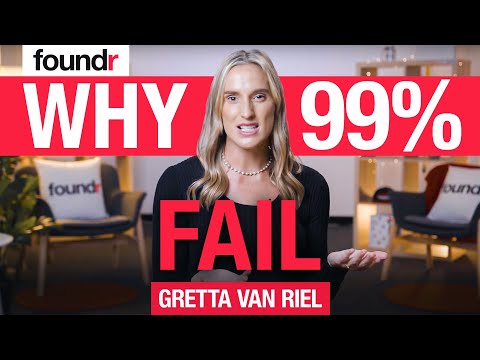There has always been a required cost to sell on Amazon. And the logical question anytime you’re presented with business expenses like this is to evaluate the situation and ask, “Is selling on Amazon worth it?”
The answer to this question depends much more on you than it does on Amazon. If your business is set up in a way that jives with the unique Amazon process, and you have strategies in place that will allow you to thrive on the platform, you’ll find that it is 100% worth the costs to sell on Amazon.
But if your business model isn’t compatible with Amazon or you find the fees keep stacking up, your results will be markedly different. In fact, after a few months of trying, you might look at other entrepreneurs and ask enviously, “How can you make money selling on Amazon?”
The secret to success on Amazon is knowledge, so this guide will introduce the different ways you can sell on the platform and advanced strategies for maximizing your profits.
Amazon Isn’t Just Another Ecommerce Platform
Let’s start out by looking at what makes Amazon different from every other platform on earth. First, it’s the only one we can think of that’s named after a rainforest. More importantly, it towers over the competition. These statistics should help you get a feel for the scale we’re talking about:
- More than 300 million active customers use Amazon in 180 countries
- Third-party sales are growing 52% year over year
- There are more than 150 million Amazon Prime members on earth
- Amazon’s app is twice as popular as Walmart’s second-ranked mobile shopping app
- 89% of online shoppers say they’re most likely to buy from Amazon
- America’s small- and medium-sized businesses sell 4,000 items a minute on the site
As you can imagine, there are business owners around the world lining up to sell on Amazon. In fact, there are almost 2 million sellers currently enrolled, with many more on the way.
The fact that you’ll be bumping elbows with millions of rival sellers on Amazon is certainly a relevant factor. Competition is fierce on the platform so it’s never enough to simply be adequate. If you want to stand out from the crowd, you’ll need to have a plan and then effectively execute your plan.
To Pay Amazon FBA Fees or to Not Pay Amazon FBA Fees
There are many different ways you can approach your Amazon sales operations, but they can be boiled down to 2 different categories:
- You’re a Fulfillment by Merchant (FBM) seller
- You’re a Fulfillment by Amazon (FBA) seller
If you take the Amazon FBM route, you’ll handle things just as you would if you were selling on your own website. This means that you’re in charge of maintaining an inventory and then shipping products to customers when they make purchases.
The second option is to be an Amazon FBA seller, which means that all you need to do is send your products to Amazon. Once these shipments have been received, Amazon will take it from there, handling inventory management and shipment to customers. As Jesse Sumrak explains in an ecommerce report:
“Amazon FBA keeps the boring chores off your plate. When you sign up for FBA, they do all the storing, packing, and shipping for you. Instead of desperately looking around for the scissors and tape, you can get back to searching for industry-shaking solutions and business-changing innovations. Because that’s what you really enjoy about running your business, right? While Amazon FBA is a game-changer for startups, it’s not perfect. It has its pros and cons that make it right for some businesses and wrong for others.”
It’s important to point out that while Amazon FBA shares characteristics with the traditional dropship model, there are crucial differences. For example, with dropshipping you never touch the product. It stays in the dropshipper’s warehouse until a purchase is made and the product is shipped to the customer.
With Amazon FBA, you are responsible for procuring the product. As the owner of the product, it’s your duty to send it to Amazon so that they can handle all of the back-end functions that occur after a purchase has been made.

The 6 Types of Amazon FBA Fees
Another key difference between dropshipping and Amazon FBA is how the fees are handled. If you partner with a dropshipper, they might just charge you a single fee per sale. But Amazon takes a multi-layered approach, which warrants a closer look at the different kinds of FBA fees.
- Monthly Inventory Storage Fees: As the name suggests, you’ll be charged a fee each month that your products reside in Amazon’s fulfillment centers. The cost is based on the volume of your inventory.
- Returns Processing Fees: Customers are more motivated to make purchases when the return shipping is free. But someone has to pay for the shipping in the case of a return, and Amazon isn’t going to do it. Thus, if your products come with free return shipping, you’ll be on the hook for this fee any time one of your customers returns a purchase.
- Fulfillment Fees: These are the Amazon FBA fees that most resemble typical dropshipping fees. Whenever a sale is made, you’ll be charged per unit to cover the locating, packing, and shipping of it to the customer. Additionally, these fees cover customer service and the handling of any returns.
- Long-Term Storage Fees: Given the scale of their operations, Amazon prioritizes efficiency. So they will charge you additional fees if your products stay in their fulfillment centers longer than a year.
- Removal and Disposal Fees: Let’s say that some of your products aren’t selling. Rather than pay the long-term storage fees, you can have Amazon either ship them back to you or dispose of them. Regardless of which option you choose, a charge will apply.
- Unplanned Service Fees: As long as you keep your inventory organized, you’ll never need to worry about this final fee. But if you were to send Amazon some of your products and they weren’t packaged properly or lacked necessary labels, you would get dinged with these punitive measures.
Is Amazon FBA Worth It?
That depends on whether or not you can reliably deliver a great product to Amazon that will consistently sell. When your products are moving off the shelves at a good pace, you’ll only need to worry about the monthly inventory storage fees, fulfillment fees, and returns processing fees. This means the cost to sell on Amazon is quite low given the opportunity you’re getting to list your products on the largest ecommerce site on the planet.
The other 3 fees (long-term storage fees, removal and disposal fees, and unplanned service fees) only come into play when your sales lag or your operations aren’t running smoothly. But we all know that running a small business is full of unpredictable obstacles. So you can’t necessarily assume that you’ll never run into these additional fees.
Our recommendation is to budget for the periodic extra fee so that you can navigate the ups and downs of entrepreneurship without getting caught off guard by costs.
How Should You Proceed With Selling on Amazon?
The barrier to entry is quite low with Amazon, which is both a blessing and a curse. You’ll find that it’s not too difficult to get started, but this factor also means you’ll also encounter more competition than you would elsewhere.
There’s another element of the platform’s competitive landscape to be aware of: you might face off against Amazon itself. The company has its own private label, Amazon Retail, that sells a staggeringly vast array of products.
The issue isn’t simply that you might get outsold by Amazon Retail from time to time. For many sellers, it’s a daily occurrence. And things can get exceptionally difficult for these sellers because Amazon gathers more customer data in a single day than you could get in a lifetime. Armed with these insights, Amazon is able to set its prices with ruthless precision and then showcase its own products front and center.
Here are a couple of lessons to learn from this dilemma:
- It’s wise to avoid going head-to-head with Amazon whenever possible
- Using Amazon FBA helps to minimize the disadvantages
The first point is obvious. Whenever you compete with someone who also happens to own the game and can create the rules as they go, you will probably lose.
Let’s instead focus on the second lesson. If you take the FBA route, you’ll be able to participate in the wonderful world of Amazon Prime. Remember, there are 150 million loyal members in this program. So when your FBA products are included, you’re given a major boost.
By selling on Amazon FBA, you’ll also have the option of using Amazon Super Saver Shipping. So even if a customer isn’t a Prime member, they can still get free shipping if your product either meets the Super Saver Shipping threshold or is combined with other qualifying products.
Both Amazon Prime and Amazon Super Saver Shipping have been proven to bring great results to small business owners. These programs also connect you with customers in a way that is nearly impossible otherwise. Remember, when you sell on Amazon’s platform you won’t have the same customer relationship management (CRM) abilities you’d have if the sale came through your own website. It’s a “one and done” thing, preventing you from reselling or building a long-term relationship.
So unless you feel extremely confident in your ability to advertise your products and then handle the shipping with precision, you should think long and hard about paying the Amazon FBA fees because of the advantages the program provides.
Let’s review some of the primary benefits and drawbacks associated with selling on Amazon.
- Access to an international audience on a massive scale
- Seller resources and support
- Pre-built platform to sell from
- Reputation bolstered by Amazon’s name
If you sign up with Amazon FBA, you’ll likely see these additional benefits such as more sales via Amazon Prime and Amazon Super Saver Shipping, no need to carry stock, and no need to ship to customers. The amount of time and energy you’ll save can more than make up for the Amazon FBA fees.
But it would be overzealous of us to recommend Amazon FBA to everyone. As mentioned earlier, this program only works if it aligns with your business model and you use strategies to keep your costs down. Jesse Sumrak suggests:
“You might be anxious to get started with Amazon FBA, but take it slow. Taking your time will help you adjust to the processes, mitigate mistakes, and use data to determine future decisions. Start with a single product. Figure out all the details about shipping your products to Amazon and moving inventory in and out of their warehouses. If you’re making a consistent profit, scale your business. Add additional products (one at a time) to FBA and see if it continues to work. It’ll take time to get the hang of things and learn best practices. You may find that some products get high return rates through FBA, and you may decide to sell those through self-fulfillment.”
This scaled approach is essential to your success on Amazon. By adding products, watching the results, and then making individual decisions on how to handle fulfillment in the future, you’ll fine-tune your business operations and avoid major missteps.
If you’d like to get even more strategies for selling on Amazon, check out our course on how to sell on Amazon FBA. Instructor Melisa Vong shares the blueprint for launching a successful Amazon business and provides insider tips for how to make a “full-time income” on the platform.
The post Is Selling On Amazon Worth it? Get Your Questions Answered appeared first on Foundr.
via https://AiUpNow.com October 7, 2021 at 09:27AM by Grant Olsen, Khareem Sudlow,


